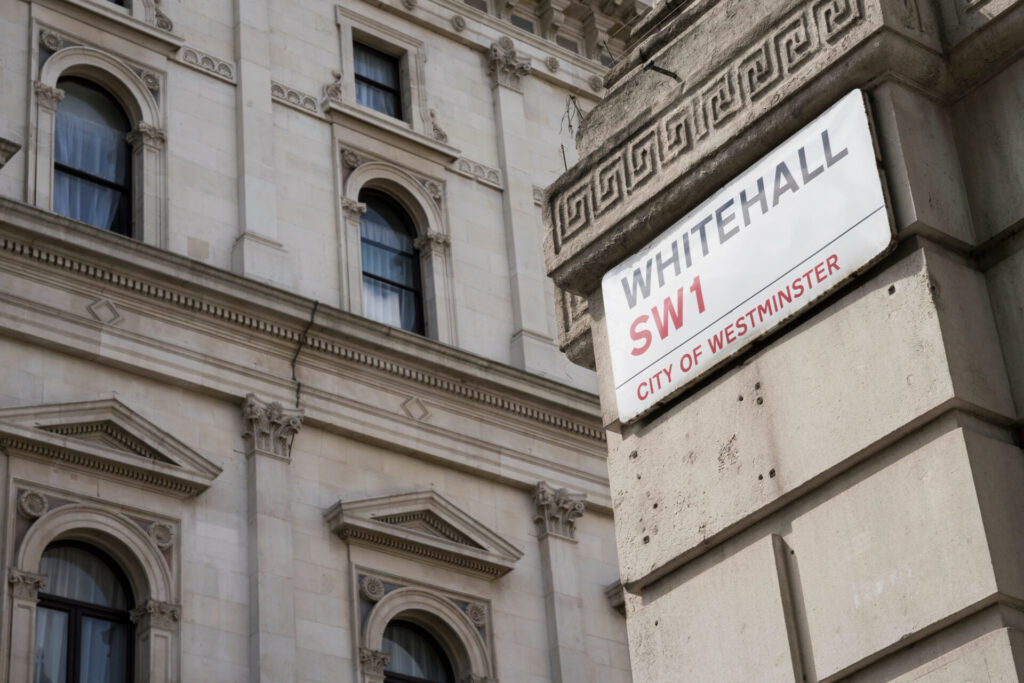Across the UK, law firms are facing pressure to perform on more fronts than ever, in attracting and retaining top talent, meeting hybrid working expectations, strengthening client relationships, and maintaining a sense of cohesion and culture in a sector known for its intensity.
Following extensive research into the legal sector here in the UK, one of the most underutilised assets amid this transition is a law firm’s physical workplace.
Over many years working with professional services firms, one thing we continue to hear is that the office is no longer just a place to work. It’s a strategic asset, and when done well, it can lift performance, reputation, and employee satisfaction. When not done so well, or left to stagnate, it can quietly undermine all the above.
What our research found
We recently commissioned research, to gain sentiment and trends around law firms’ businesses, people and spaces, and the relationships between the three, and the analysis revealed a snapshot into what’s on the minds of people inside UK legal firms right now.
The sentiment was overwhelmingly positive, taking opinions from 28 law firms, and with more than 196 talking points and 103 unique viewpoints, it’s clear that themes of business strength, performance and reputation dominated.
One particular firm realised 9% revenue growth, while another’s continued expansion and financial resilience demonstrates the sector is vibrant and ambitious.
But beneath the surface, there’s another story. Mentions of technology, space, and people – especially in relation to workplace experience – were notably quieter, which tells us that while firms are rightly focused on growth and strategic wins, there’s room to do more when it comes to enabling that success through smarter environments.
Spotting the gaps
In an industry where discretion, high performance and client trust are non-negotiable, the environment people work in every day should be optimised to support exactly those outcomes.
And yet, many firms are missing an opportunity. Our data showed low engagement around sub-themes like connectivity, hardware, and tech support, precisely the elements that can make or break a hybrid work culture. Similarly, sentiment around ‘spaces’ was neutral, suggesting these environments are seen as functional, but not transformational.
So, what does this mean? It means firms may be meeting the basics, but not getting full value from their offices. That’s where a smart fit-out becomes more than cosmetic. It becomes strategic.
Designing for the legal sector
It would be tempting to look at trends from tech or creative sectors and apply them, with beanbags, hot desks, plant walls and a pool table, even. But law firms aren’t startups, and they have distinct needs such as confidentiality, and prestige.
Smart design in legal environments is about nuance. It’s about:
- Creating zones that respect the need for privacy without isolating people
- Embedding technology seamlessly so hybrid meetings work, first time, every time
- Designing spaces that reflect brand values and reassure clients from the moment they step inside
There’s no one-size-fits-all solution, rather solutions tailored to the firm’s specific ambitions, culture, and hybrid working. In fact, according to CBRE’s 2024 Law Firm Benchmarking Survey, most law firms have established hybrid work policies, with many requiring three or more days per week in the office.
Despite these policies, office attendance and space utilisation remain lower than preferred, prompting firms to reevaluate their office designs to better support hybrid work models.
Likewise, Lodders Solicitors adapted to a hybrid working environment by rethinking its meeting spaces. As the firm transitioned to hybrid working, the way meetings were conducted changed dramatically.
Teams now needed smaller, soundproof spaces equipped with advanced tools such as integrated video conferencing screens. However, the existing meeting rooms were built for traditional, in-person gatherings of eight to 10 people, offering limited acoustic privacy and lacking the modern technology required for seamless virtual collaboration.
Procurement as strategy
One of the biggest shifts we’re seeing is a move away from reactive procurement. Too often, office design is triggered by a lease break or the need for more space and not a strategic review of what the firm really needs.
The firms seeing the biggest benefits are those treating fit-outs as part of broader performance planning. They bring HR, operations, and facilities together early, align their space with ESG goals, and take a proactive approach to enabling culture and collaboration. It’s not about spending more, it’s about spending smart – with growth and outcomes in mind.
Here’s what the data shows us. After one major Birmingham office refurbishment, nearly 20 promotions followed in short succession, a signal not just of growth, but of confidence and satisfaction within the team. In another case, repeated mentions of improved engagement and retention were linked directly to the quality and functionality of the workspace.
When you view the office as a tool, not just a location, you see returns in reputation, performance, and people outcomes, which matters a great deal in a sector where reputation is everything.
By aligning space with the specific needs of different teams and tasks, firms can reduce friction, enhance client service, and enable more seamless hybrid working. This, in turn, helps attract and retain top talent, a growing challenge in an increasingly mobile legal workforce.
Beyond functionality, physical space also plays a critical role. It reflects a firm’s values, ambitions, and investment in its people. Thoughtful design choices, from acoustic control to breakout areas and tech-enabled meeting rooms, are a commitment to excellence, adaptability, and well-being.
Trends across the sector suggest that workplace strategy is fast becoming a key differentiator, with many firms already drawing a link between office design and outcomes like performance, talent attraction, and client engagement.
The opportunity now lies in enhancing that connection through real, measurable success stories. At the same time, technology remains underserved, with themes such as software, connectivity, and support notably underrepresented. This reveals a clear gap around the role of tech-enabled environments in driving legal productivity and collaboration.
That the data revealed high sentiment around team success and internal recognition points to the emotional drivers underpinning workplace experience. There’s a valuable opportunity to create strategies that put people, not just process, at the centre of workspace change.
One of the most compelling lessons we’ve taken from working with law firms is that timing matters. Just like in healthcare, where early diagnosis leads to better outcomes, the earlier you act on workplace challenges, the more impact you can have.
You don’t design for desks anymore. You design for retention, for client trust, and culture and offices should be built around those values.
The future of the legal workplace isn’t reactive, it’s responsive, human-centred, and designed for growth and outcomes. And those firms willing to make that shift are not just improving office space, they’re securing their competitive edge.
Adrian Gleeson is strategy director for Rhino Interiors













